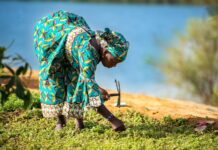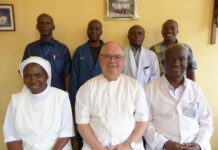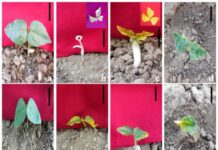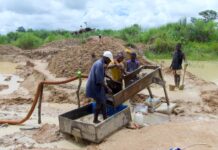A recent article by Hoeller, et al., (2024) titled “Characteristics of station‐derived convective cold pools over equatorial Africa” published in Geophysical Research Letters by Wiley online examine that CP occurrence shows a pronounced diurnal cycle with an afternoon peak, attributed to low-level moisture conditions.
“
Convective cold pools in equatorial Africa exhibit a pronounced diurnal cycle driven by moisture conditions.– Hoeller, et al., (2024)
The article investigates convective cold pools (CPs) over equatorial Africa using 2019-2023 data, identifying 4,218 CPs through temperature and wind criteria.
Convective cold pools (CPs) are phenomena caused by the evaporation of rainfall beneath deep convective clouds, leading to denser air that spreads out along the surface, creating a “gust front” with strong horizontal and vertical winds, as well as moisture and temperature anomalies. These gust fronts can trigger additional deep convective events and are significant in organizing thunderstorm systems. CPs are characterized by median temperature decreases of 5.3 K and specific humidity decreases of 2.8 g kg-1, closely correlating with satellite-observed brightness temperature discontinuities. They play a crucial role in the dynamics of tropical mesoscale convective systems, especially over land where the diurnal cycle intensifies convective activity. These CPs correlate with satellite-observed brightness temperature discontinuities, displaying a notable afternoon peak due to low-level moisture and convection depth. Stations in Cameroon, DR Congo, Nigeria, and Uganda were categorized by country to assess regional climatic disparities influencing CPs. The results offer an observational reference point to enhance simulations of CP organization and forecast thunderstorm clusters.
How the Study was Conducted
The authors employed data from 12 automatic weather stations across equatorial Africa, providing a near-surface time-series with a five-minute resolution. Cold pools were identified based on temperature and wind criteria. The authors analyzed nearly 43 years of station data to identify 4,218 cold pools. Infrared brightness temperature measurements were derived from satellite-measured effective radiances to verify cold pool gust fronts. The authors analyzed the effects of cold pools on various meteorological variables and characterized their seasonal and diurnal cycles in relation to precipitation, convection depth, and moisture conditions.
What the Authors Found
The authors identified 4,218 CPs using temperature and wind criteria and found that CP occurrence shows a pronounced diurnal cycle with an afternoon peak, attributed to low-level moisture conditions. The authors also identified CP gust fronts correlate closely with satellite-observed brightness temperature discontinuities.
Why is this Important
Weather Prediction and Modeling: Understanding CP behavior helps improve weather models and predictions. By incorporating CP characteristics, meteorologists can enhance forecasts related to thunderstorms, precipitation, and atmospheric processes in the region.
Impact on Local Climate: CPs play a crucial role in the local climate. Their diurnal cycle and occurrence affect temperature, humidity, and wind patterns. Knowing how CPs behave allows for better climate monitoring and adaptation strategies.
Ecological and Agricultural Implications: CPs influence soil moisture, evaporation rates, and vegetation growth. Farmers and ecologists can use this information to optimize irrigation practices and manage ecosystems effectively.
Disaster Preparedness: Thunderstorm clusters associated with CPs can lead to extreme weather events. Understanding their organization and behavior is essential for disaster preparedness and risk mitigation.
What the Authors Recommend
- The authors emphasize the incorporation of the observed characteristics of convective cold pools (CPs) into weather and climate models. By doing so, these models can better simulate CP organization and predict thunderstorm clusters.
- The authors recommend implementing monitoring systems that track CP behavior in real time. This information can be used for early warning systems related to extreme weather events associated with CPs.
- Consider the impact of CPs on soil moisture, vegetation growth, and evaporation rates. Ecologists and land managers can optimize irrigation practices and ecosystem management based on CP behavior.
- Given the influence of CPs on thunderstorm clusters, disaster preparedness strategies should account for their organization and diurnal patterns.
In conclusion, this study sheds light on the intricate dynamics of convective cold pools over equatorial Africa, highlighting their significant role in weather patterns, climate dynamics, and ecological processes. By understanding the behavior of these phenomena, we can advance weather prediction models, enhance disaster preparedness efforts, and optimize land management practices. As we continue to delve deeper into the complexities of atmospheric processes, the insights gleaned from this research pave the way for more informed decision-making and sustainable development in the region.
















 The African Research (AR) Index is a comprehensive scholarly directory and database focused explicitly on journal publishers that publish and disseminate African research.
The African Research (AR) Index is a comprehensive scholarly directory and database focused explicitly on journal publishers that publish and disseminate African research.

